Stanke Ropes are manufactured using various materials. Find out their properties and applications.
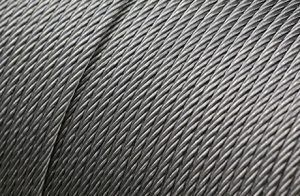
Steel
Steel is an alloy of iron and carbon and other elements. Because of its high tensile strength and low cost, it is a major component used in buildings, infrastructure, tools, ships, automobiles, machines and appliances. Types of steel depend on the chemical composition, use and characteristics. Steel is assessed according to its elasticity, plasticity, impact strength, weldability, hardness and resistance to weather conditions.
Properties and type of steel depend on the content of alloying components. For example, manganese increases its strength, harden-ability and abrasion resistance, but reduces plasticity. Similar advantages occur in the presence of silicon, which additionally helps to maintain plastic properties. The right combination of elements can significantly affect the use and suitability of the final product.
See ropes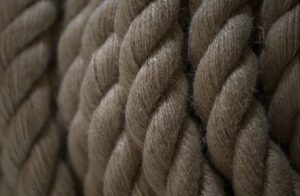
Jute
Jute rope is considered one of the most environmentally friendly building materials. This rugged and fully biodegradable raw material of plant origin is becoming increasingly popular due to its low production cost and appearance. The golden colour and clean, uncontaminated fibers make jute rope perfect as a craft item used in the arrangement of home and garden.
A unique feature of jute, is the fact that it can absorb or release moisture depending on ambient humidity. There is no process of decay. It is nice to the touch. Jute is also infamous for its insulating properties.
See ropes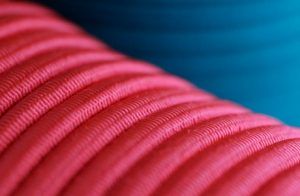
Rubber
Material resulting from vulcanization of rubber or a mixture thereof. Rubber has high elasticity, resilience and durability. It returns to its original shape even after long term deformation.
Rubber is waterproof and resistant to high temperatures, UV rays, the effect of lubricants, oils and fuels. Rubber products are soft, pliable and abrasion resistant. Because of their properties, rubber ropes are used in many industries.
Synthetically produced rubber degrades over several years, so each rubber waste dumped in the environment brings enormous damage. Rubber should be disposed of by incineration in a special oven.
See ropes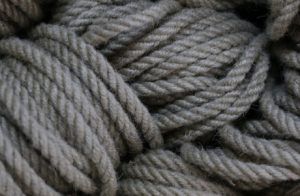
Hemp
Strong and durable hemp fiber is completely ecological and environmentally friendly. This is one of the strongest and most durable natural materials. Products made from hemp are characterized by high durability. Hemp rope is also pleasant to the touch.
Hemp fibers are resistant to UV rays, heat and insects. They are not prone to stretching or their colour to fading. With its porous structure hemp rope can quickly absorb and give water.
Extraordinary resistance to rot, mildew and salt water makes hemp often used in sailing.
See ropes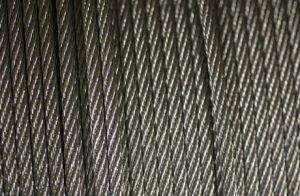
Stainless steel
Type of steel which main characteristic is corrosion resistance. The addition of chromium (min. 11%), nickel, molybdenum, and reduced carbon content creates stainless steel. It is acid-resistant and heat-resistant.
It is extremely durable. Reaction of chromium with oxygen creates a very thin, invisible film of chromium oxide, which prevents corrosion. The coating does not react with other substances and in the event of damage, it can regenerate itself.
Stainless steel can be easily melted. In combination with an aesthetic appearance and excellent durability, stainless steel is one of the best raw materials available on the market.
See ropes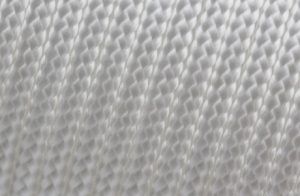
Polypropylene
One of the most popular thermoplastic polymers. Polypropylene is extremely resistant. It does not react with chemicals, alcohols, water or oil. It stays durable despite even high temperatures.
Polypropylene is odorless, harmless and completely non-toxic, therefore it may be used in contact with food. Pure polypropylene products can be recycled.
Due to its properties, polypropylene is often used in many industries. All polypropylene products can be welded and heated.
See ropes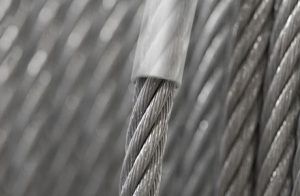
PVC
PVC is one of the most popular plastics. Polyvinyl chloride is characterized by high flexibility and ease of processing. It doesn’t lose its durability due to the combination of atoms inside that protect it from oxidation process.
Because of the low production costs and unprofitable re-processing, manufacturers of PVC continue to refine its composition, therefore, prolonging its life. Unprocessed material can be stored for long periods of time without loss of properties.
PVC is resistant to solvents and fire. Impervious to water. Due to the insulating properties, it is often used in construction and in repairs. One of the main advantages of PVC is that it works as an excellent material in the manufacture of insulation products.
See ropes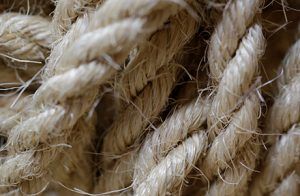
Sisal
Fiber derived from sisal agave. Due to its hardness and strength, sisal was and still is often used in the manufacture of ropes, paper, bags, carpets, paintings, etc. But perhaps the most common use of sisal twine is in cat scratchers due to its rough structure.
Sisal is fully biodegradable and can absorb more carbon dioxide than it produces. Leaves left over from production of sisal ropes may also be used, for example in the production of bio-energy, feed for animals or as a building material.
Sisal exhibits resistance to UV radiation and abrasion. It is flexible and prone to stretching. Sisal can be easily dyed.
See ropes




